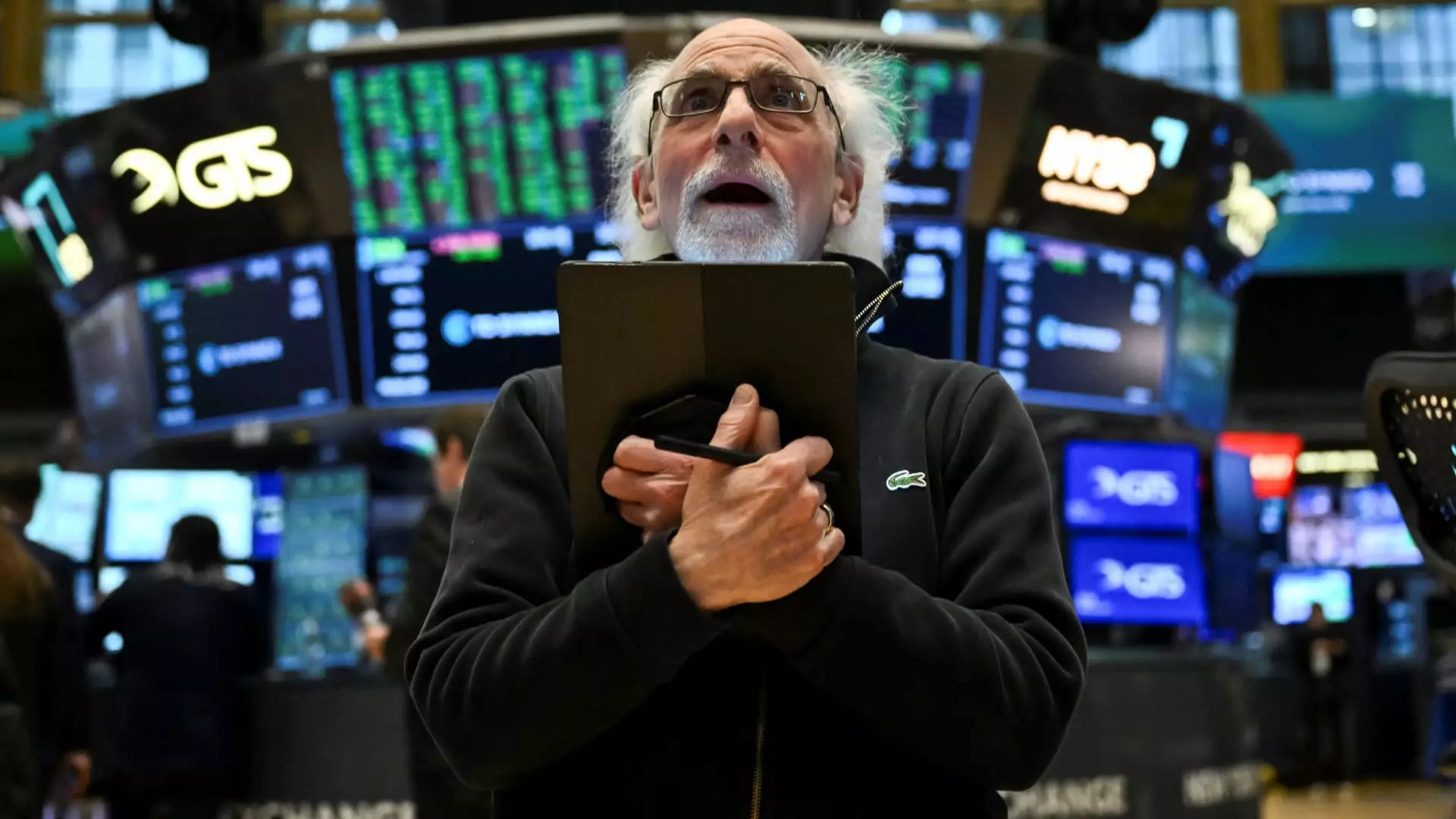Last Wednesday, the stock market was rocked by an extraordinary turn of events—a surge so intense that it compelled hedge fund short sellers to hastily exit their positions. As the S&P 500 experienced one of its most significant rallies since World War II, the underlying dynamics showcased a Wall Street phenomenon called a short squeeze. This intense scramble for cover is not simply a quirky market reaction; it reveals underlying anxieties about market stability, the fragility of investor confidence, and the very real consequences of speculative trading practices.
The catalysts for this upheaval were rooted in a financial landscape heavily influenced by President Donald Trump’s unexpected announcement of tariffs that exceeded expectations. Short sellers, confident in their bet against stocks, found themselves in a position of panic as stock prices rose abruptly. The mechanics are, at best, a high-stakes gamble: hedge funds borrow shares they believe will fall in price, sell them, and then hope to repurchase them at a lower price to return to the lender. Yet, when the market flips unexpectedly, as it did last Wednesday, it becomes a race against time for those short sellers trying to minimize losses.
The Numbers Don’t Lie
The figures surrounding last Wednesday’s trading activity are staggering. A staggering 30 billion shares changed hands in a single day on U.S. exchanges, marking a historic high. Bank of America reported that hedge funds had positioned themselves nearly twice as aggressively short as they did during the early days of the COVID-19 pandemic. This kind of speculative frenzy raises serious questions about the market’s health and the rationale behind such risky investment strategies.
Interestingly, Goldman Sachs reported a rise of 12.5% in the most shorted stocks, outpacing the S&P 500’s impressive 9.5% gain. This divergence highlights a potential disconnect in market sentiment; while some investors’ reactions seemed jubilant, many short sellers faced a dismal reality. The real question remains: are investors truly confident in the sustainability of these gains, or are they merely riding the momentum of an emotional market filled with paranoia and haste?
The Role of Psychology in Market Movements
The fear and anxiety that ripple through the market can amplify volatility as traders overreact to any sign of movement. This psychological component adds layers of complexity that can exacerbate price swings, creating a more fragile market environment. Jeff Kilburg, CEO and CIO of KKM Financial, succinctly captured this sentiment, pointing out, “You can’t catch a move.” The marketplace today is riddled with twitchiness and an air of paranoia, which complicates decision-making processes for even the most seasoned investors.
Moreover, even with this massive sell-off by short sellers, long-only funds—those traditionally seen as the guardians of stability—were reportedly buying record amounts of technology stocks. This duality illustrates an ongoing divergence in market strategies: some investors bet on the robust comeback of tech stocks, while others react defensively to the threats posed by an unpredictable economy.
The Lingering Threat of Future Short Positions
Despite the frantic cover-ups last Wednesday, the specter of high short positions remains a looming danger. Traders have cautioned that a significant number of stocks still sit vulnerable in the short-seller camp, hinting at potential further volatility. As Bank of America accurately noted, the short-covering spree is likely far from over.
One can’t help but reflect on how this short-selling saga speaks to broader economic uncertainties, particularly concerning the high tariffs imposed by China and ongoing geopolitical tensions. Investors are left grappling not just with economic fundamentals but also with the psychological burden created by those who are betting against the market. The impact of these conditions may well extend beyond mere trading sessions, affecting market sentiments in the weeks or even months to come.
In a world where short positions can pose a multi-faceted threat, it’s essential to question the sustainability of any rally sparked by panic-induced buying. The intricate dance of emotion, economics, and speculation is not merely a financial story—it’s a glimpse into the complexities of human behavior that guide our financial markets and, ultimately, our economic futures.

